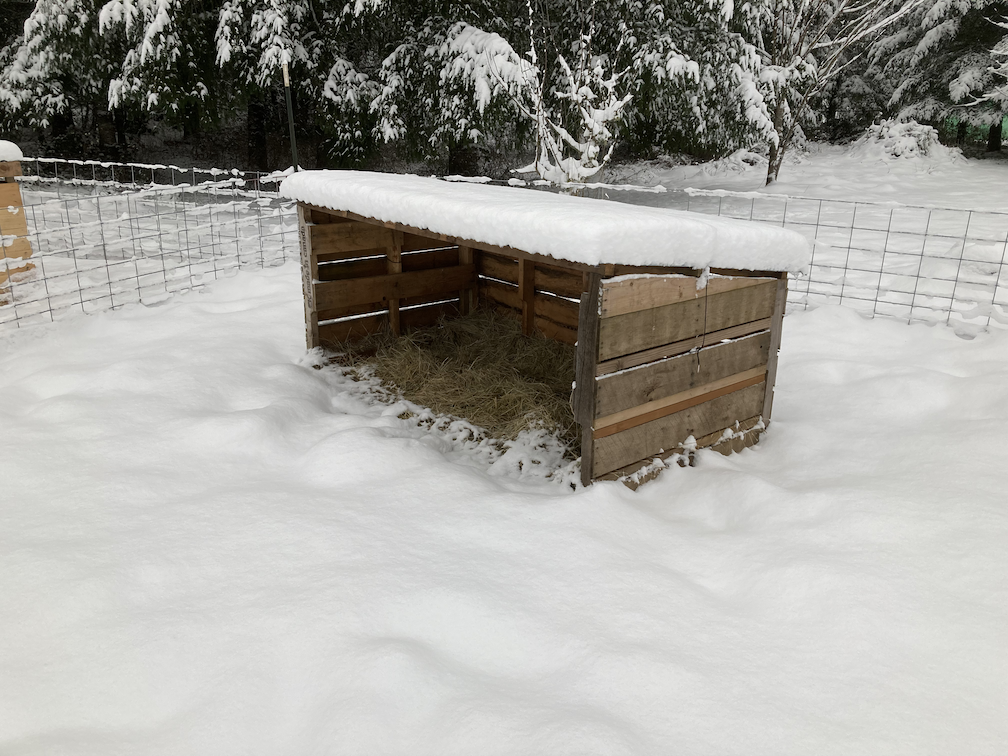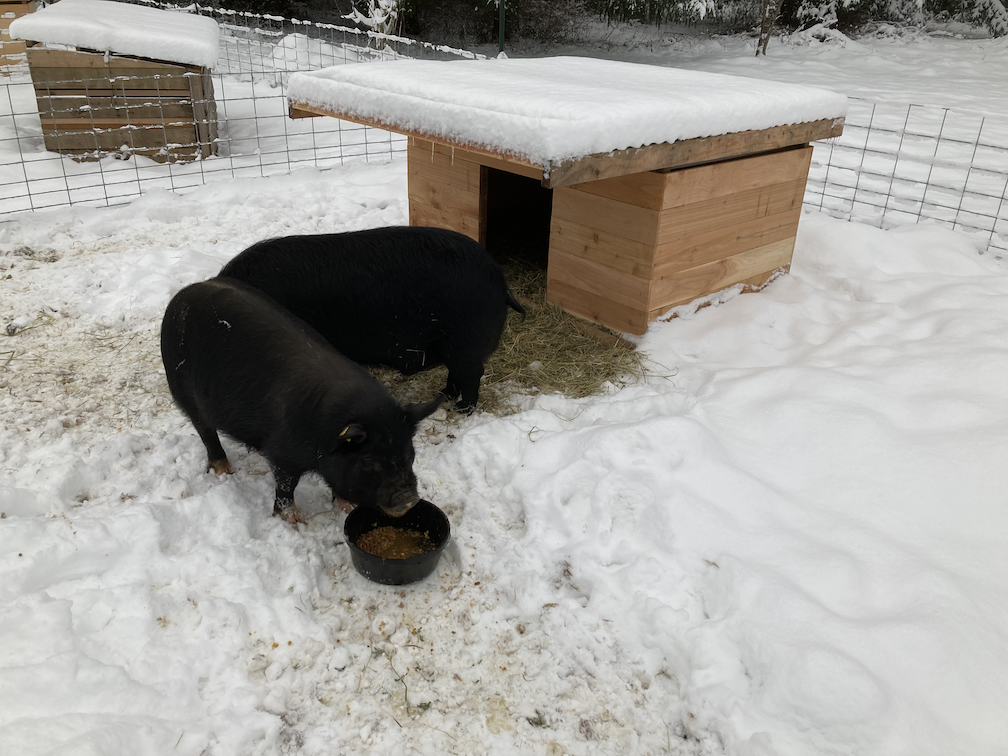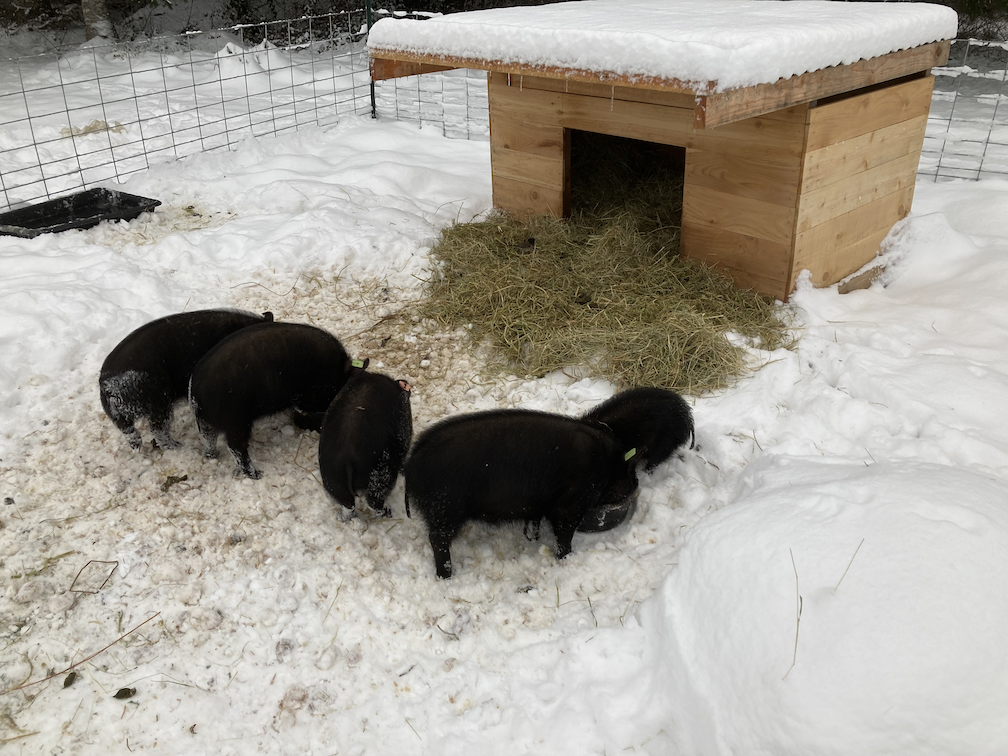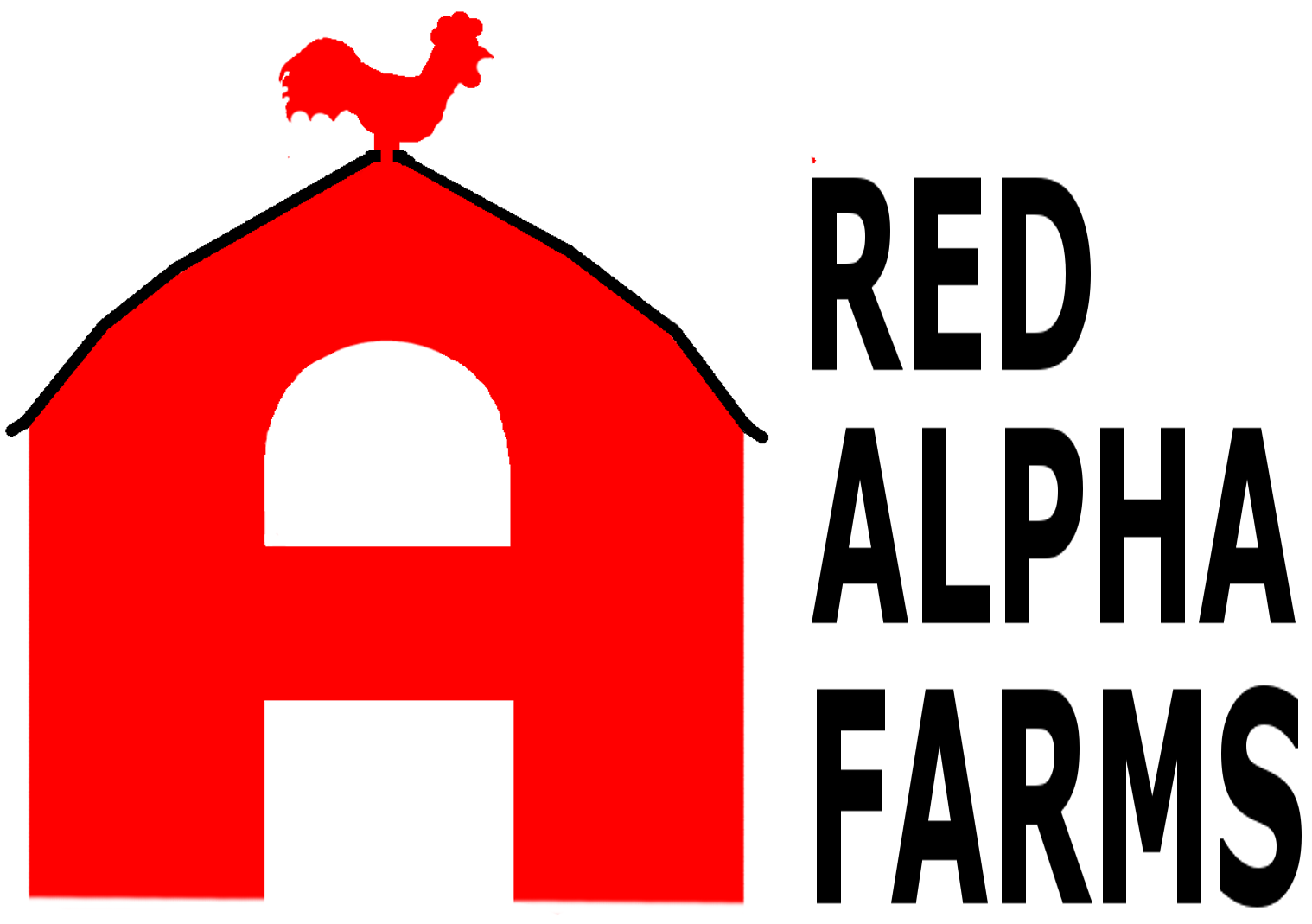Since we began raising American Guinea Hogs, we’ve had a number of shelter solutions. We move our animals frequently, so any shelter has to be mobile. They also need to be large enough for a pair of breeding hogs, a sow and litter, or a litter of hogs to get up to around 6 months in.
We began with 2 pigs that were around 8 and 12 weeks, so we started with a dogloo for large dogs. That worked really well for 3-4 months.
We next used a pallet house that was made with 4 pallets screwed together with some leftover plastic corrugated roofing on top. There might not be anything more convenient to build than a pallet house.
That pallet house worked, but it was very open on one side, and was extremely heavy — the roofing supports were 2x4s — not good. I built another one in a similar fashion, but cut down the pallets to 3′ high in the front and 2.5′ high in the back, and then installed galvanized roofing on 2×2 frames.

That worked very well, and was easy to move. It was much lighter. In order to make moving the pallet house easier, I put a 2×4 on each side of the bottom, the long way, to act as runners, and to hold the pallets together. I then put large eye-bolts in each end of each 2×4, to allow me to connect a rope with carabiners attached to each eye-bolt and allow me to drag it around.
The problem with that shelter is that we just got into some weather that was down in the teens, and I didn’t want the hogs to get too cold, so it was time to build the next iteration of the shelter.
This shelter was framed out of 2x4s, with an open bottom, and cedar fence boards for siding. The door is 2’x2′, with the shelter being roughly 6’x4′. The roof is 3′ high, and there is a covered porch to keep the weather out of the doorway. This one also has a front handle and pegs sticking out the back just under the roof to allow it to be flipped up to clean out. I also placed a sheet of 2″ foam board insulation just below the gap between the siding and the roof to make it even warmer.

The shelters open bottom allows a great amount of hay or straw (or other bedding) to be placed inside the shelter. When it gets a bit full, I just rock the shelter around a little bit to get the sides to crawl up on top of the bedding, and it helps keep the hogs up off the ground better.

I’m not moving them much with snow on the ground, so I will likely also install runners on the bottom and pull this around when better weather returns.
What do you use?
